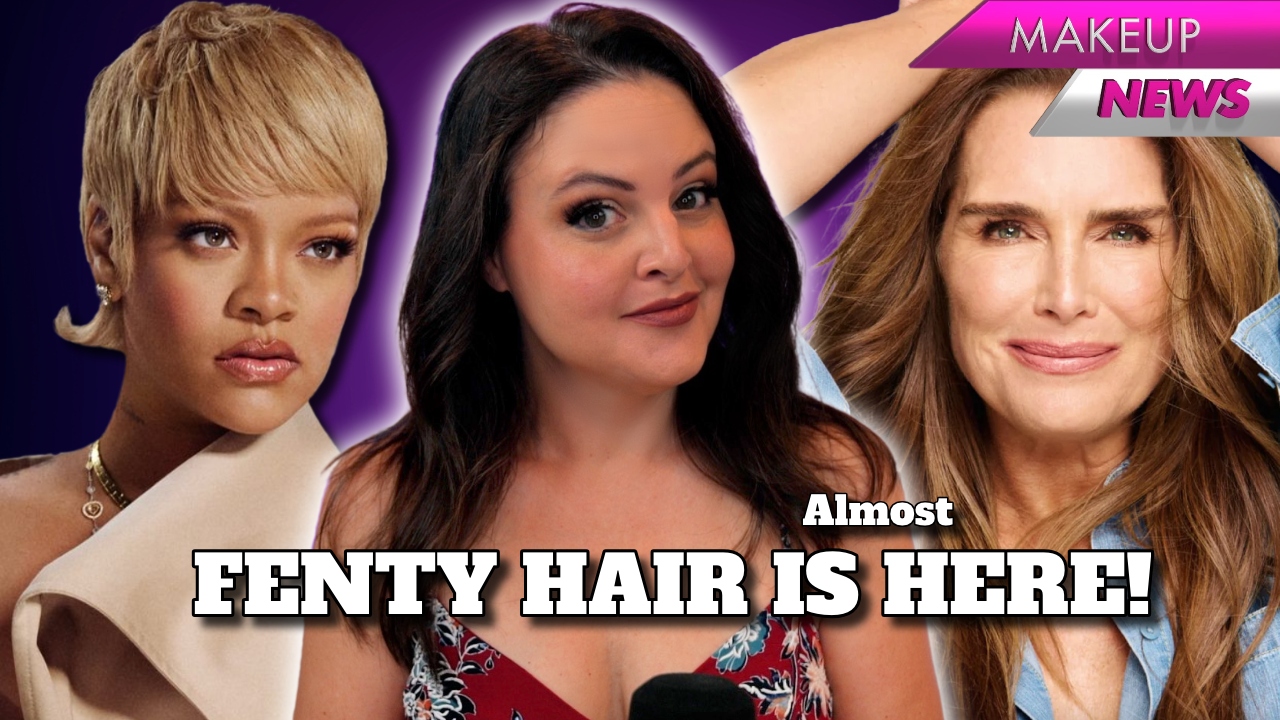
Why Content Creator Jen Luv Thinks Beauty Brands Shouldn’t Dismiss The Power Of YouTube
Even in the age of TikTok, Jen Garancheski, better known as beauty influencer Jen Luv, thinks YouTube shouldn’t be written off.
After all, for many people, YouTube has basically become television. Some 2.5 billion people are active monthly users, an amount equal to about a third of the world population, and they watch on average over 1 billion hours on YouTube daily. However, to intrigue the beauty enthusiasts among them today that have multiple pulls on their attention, Garancheski argues it takes more than the odd product review.
“It used to be that the newest makeup launch was enough to bring in new viewers, but I just don’t think it still is,” she says. “There are always new viewers who are looking for that content, but those massive audiences of millions of people don’t necessarily need that content anymore.”
On YouTube, the Jen Luv channel has 329,000 subscribers and over 62 million views on 2,500-plus videos. Garancheski uploads four videos weekly covering the latest beauty brand headlines, influencer scandals and products. She began posting on YouTube under the name Jen Luv Reviews in 2012, and three years later she started “What’s Up in Makeup,” a weekly show delving into beauty industry news. In 2020, she changed her channel’s name to Jen Luv to pivot away from product reviews.
Beauty Independent spoke with Garancheski about her love for reporting beauty industry news, whether makeup tutorials are dead, TikTok’s downsides, the future of indie beauty, and what investors and strategic buyers doing due diligence on the beauty brands up for sale shouldn’t skip.
Are your viewers more interested in learning about beauty headlines than product launches now?
People definitely want to know about the beauty launches. There’s a big audience for that. I have my new product report video on Monday, but there are so many people talking about new makeup releases in those “Will I buy it?” videos, which was invented by a creator named Samantha March. I personally focus more on the industry news because there’s less people doing that on YouTube.
Was focusing on “What’s Up in Makeup” a conscious decision to keep your channel relevant?
I don’t think that was ever the conscious thought of, “To be relevant, I need to do this.” It was a natural progression. I started doing the top news segment maybe 2015 talking about industry news. At that time, I had a team of reporters helping me with the show who were picking the stories. I wasn’t as engaged in the content. I was really thankful to have them help me with it, but I found my delivery was different when someone else had written the content and done the research.
When I decided to start doing “What’s Up in Makeup “on my own in 2020, I started really digging my heels in and found my personal joy in researching what was happening in the industry. It’s also about the telling of the stories instead just of reporting on the news, though. The stories of the people from Beautycounter who worked there, the stories of Golloria George and how she engaged with Youthforia.
I like telling those stories. Once I realized that and noticed that my audience was engaging more with that content, I thought, this is perfect because not only do I love it, my audience loves it. So, it’s a perfect match.
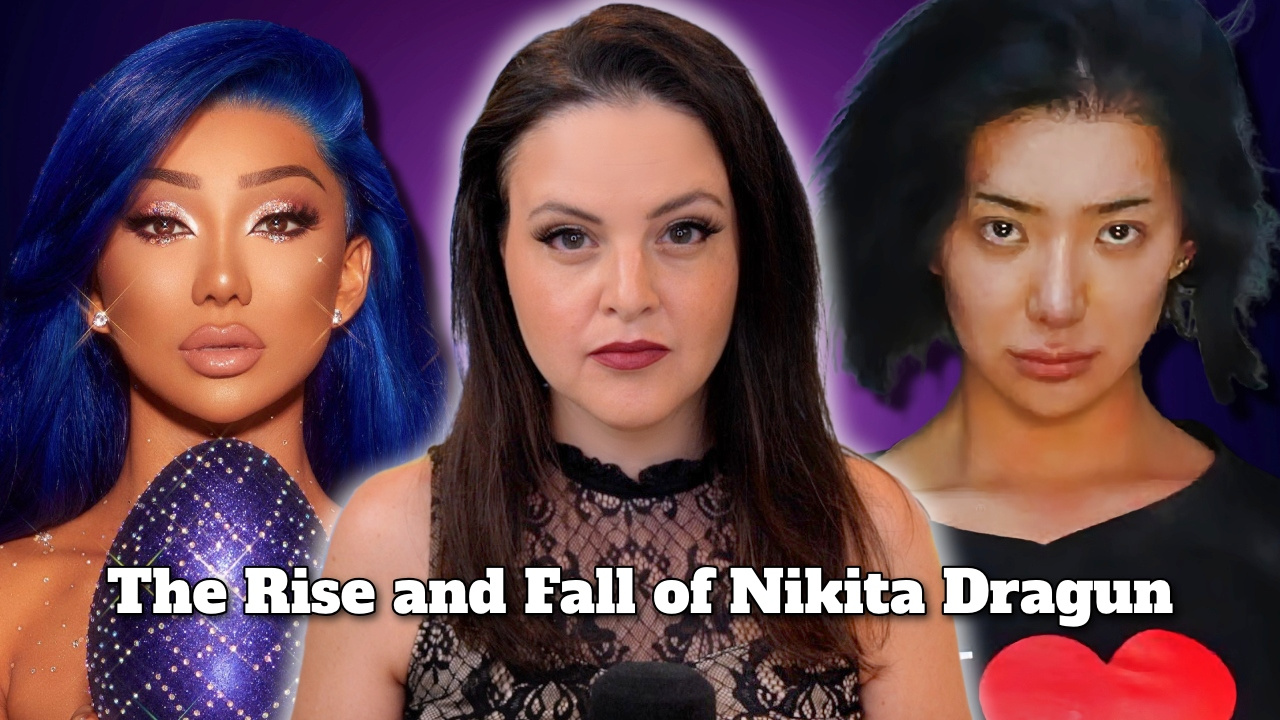
Is it possible to grow on YouTube as a beauty creator today?
It definitely is possible, but it has to be more than just about the product. It used to be you would go into the drugstore, and you would see a wall of product and say, “Where do I even start? I have no idea.” It was a complete crapshoot. YouTube came to the rescue. You could see the application of the product, and you could learn new techniques. You were getting this insight that you had never gotten before, and it was special.
At this point, people who’ve been engaged in the space for a long time, we’ve now found our favorites. We know what products we like, we know what brands we like and brands we don’t like. We don’t necessarily need the makeup review on every single product. When I’m tuning into a beauty channel now, it’s because I like the person. I want to hear what they have to say because I like spending time with them.
I am very thankful to be a channel that’s growing right now because I didn’t grow for two and a half years. The thing that brings people in that’s different is the industry news and the deep dives. It gives people a different reason to watch. For a new channel, what they need to do is find that thing they love doing. That’ll give people a reason to watch. It’s possible, but it’s hard.
Is the makeup tutorial dead on YouTube then?
I don’t think the makeup tutorial is dead. If people want to know that information, they can find it easily without a new video from a new creator. There’s a library that exists now on social media compared to years ago.
The tutorials created now aren’t different than the ones that already exist. The people that are doing the best with tutorial-type content right now are people that are very trusted reviewers, very talented and also, to be honest, very beautiful. They have this trifecta of magic that brings people into their channels that you can’t manufacture.
As a long-form creator, what are your thoughts on beauty content on TikTok? Do you find it valuable?
I’m not a big consumer of beauty content on TikTok personally. I know what kind of makeup skills I have and how I like to do my makeup. If I want to learn a new technique, I will not go to TikTok first. I will go to YouTube first because that’s my comfort zone.
Some of the reviews on TikTok are very good, but a lot of them are commercial-based. Either they’re being paid directly, or they are trying to be paid directly, so the only value I get out of it is seeing the application. This is not an absolute by any means, but they seem to have a different agenda on TikTok than on YouTube, where the makeup review was meant to help the consumer. The purpose of the makeup review on TikTok seems to be getting the attention of the brand.
My concern then is, how many people are watching this content that may not know that something is ad-focused instead of review-focused? They may not realize the person’s only talking about this product because it monetizes high on TikTok Shop or because they have an affiliate code. They will then be tricked into buying something that is not a good quality because the person was trying to help themselves rather than helping the consumer. Because of the short-form nature of TikTok, there isn’t as much emotional attachment to the audience and vice versa. It’s just numbers.
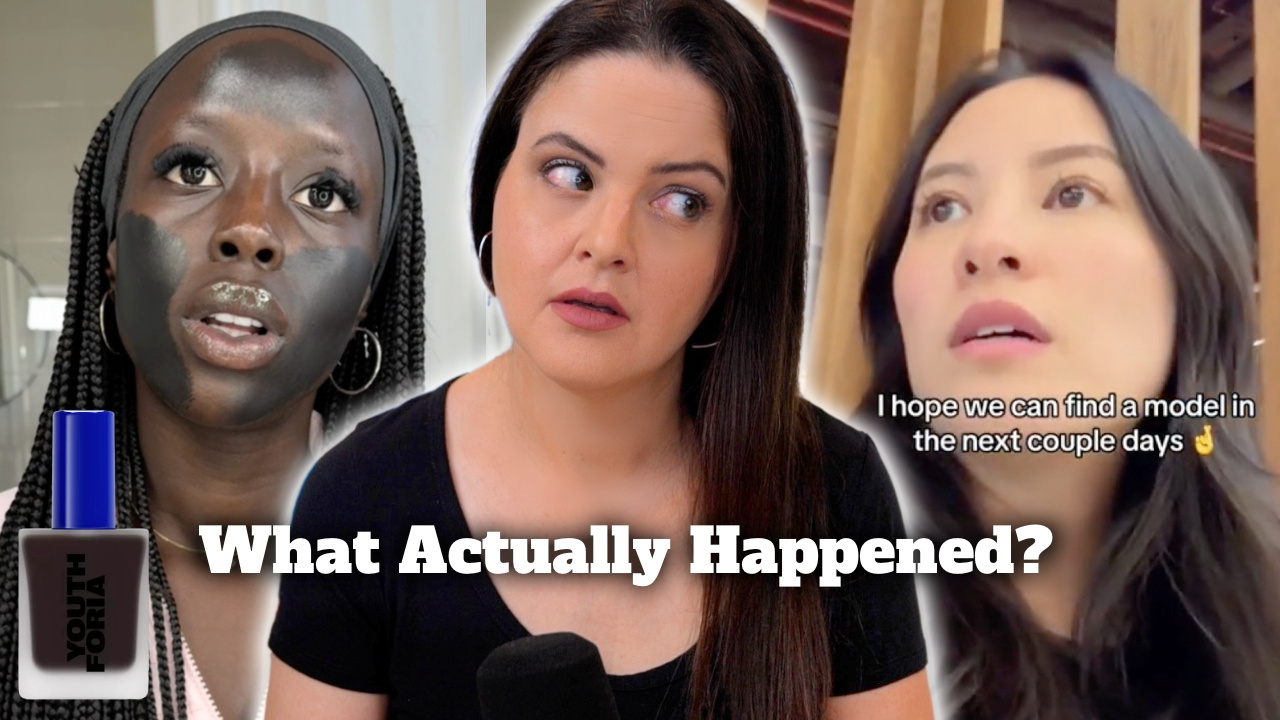
Are brands still engaging with creators on YouTube or are those dollars being diverted to platforms like TikTok and Instagram?
Brands will always follow the money. There is sponsorship still on the platform. There’s still affiliate links, there’s still PR being sent to people on YouTube. Audiences may not notice it as much because you’re scrolling faster and seeing more pieces of content in five minutes on TikTok or Instagram than you’re seeing in five minutes of YouTube. So, it may seem like there’s more just because we’re seeing more pieces of content on those platforms.
Brands should still be looking at YouTube for selling their products because the consumer is more engaged with the creator and is more likely to have a stronger connection with that creator. Also, there’s people that do enjoy those longer-form, more informational pieces of content. When your product performs well, it will sell on a YouTube video.
On TikTok and Instagram, it’s more of an instant thing. The people that are very serious about products will learn more on YouTube and be more likely to become long-term loyal customers. Of course, I’ve never seen the brand metrics on the backend of how the conversions work between YouTube, Instagram, TikTok. I would imagine that YouTube is still a wonderful investment for brands. It may be a slower, long-term strategy instead of that dopamine hit of TikTok.
You covered the Youthforia controversy closely on your channel. What captivated you about the story, and what was the reaction to your videos on it?
When I saw Golloria George’s video, my jaw dropped, and when my jaw drops and I get that feeling in my stomach, I know that this is a story that needs to be told. Then, I read the comments next to her video. Some people just didn’t seem to understand what she was talking about that, and they didn’t get why this was a big deal and why this was insulting. A lot of people said that there were people who could wear this pitch-black shade, which we know is not true. There were people who were saying, well, you could just mix it into other foundations and then it would work.
I talked to one of my very best friends, [content creator] Audra [Reins], about it, and as I started reading and listening to other people’s perspectives, I knew that this was a story I needed to tell from those perspectives. It wasn’t about anything I was feeling or was shocked by. It was about the feelings of Black women specifically and their reactions to what was happening. That was very important in covering that story and why there was such a positive reaction to it from viewers.
I was very happy to be the mouthpiece to put it all together and organize it in a way that people who may not have understood what was happening could now understand. That was my favorite part of reading the comment section was when people would say, “I didn’t understand this, thank you for explaining it to me.” I’m really proud of the pieces that I did on Youthforia.
You discuss indie beauty brands a lot. How do you think the segment is going to shake out?
There is a solid customer base looking for indie makeup that wants to support small businesses. They like the idea of someone who loves makeup creating the makeup, someone who’s not a corporation. Just like with big brands, how successful a small brand will be will depend on the choices of the people in charge. It’s harder as an indie brand because you don’t have as many people chiming in on the choices and the people who are chiming in on the choices may not have as much experience or knowledge as those who are involved in the larger brands.
I think the passion of the owners and the people that work at indie brands will perhaps carry them through mistakes like shipping delays or a pan falling out of an eyeshadow palette because it wasn’t glued properly. Customers will be much more forgiving of errors like that than they would of a larger brand.
You can’t really speak to indie makeup as a whole as far as success or failure because each individual brand is going to make choices that will lead to their success or possible closure. It’s not going to be that there’s no audience for it. It’s not going to be that there’s no customer. It’s going to be what that indie brand chooses to do. I do think indie beauty will be here for a very, very long time, which brands will be here, I don’t know.

Do customers think of brands started by industry professionals or second-time founders differently?
I don’t think the customer is going to treat the two brands the same. I don’t think the customer is looking at Polite Society, for example, as an indie brand. It’s a totally different thing in the mindset of customers. If it’s started by somebody that is already known to be an industry professional, and they’re coming out of the gate at Ulta, that’s not an indie brand to most consumers.
When I think of an indie founder, I think of Maggie and Leigh [Cavanaugh] at Clionadh Cosmetics. I think of Gisselle [Hernandez] at Glamlite. They started these brands from their houses. People won’t see these businesspeople the same as them, for example. It’s a totally different trajectory, and I don’t think that that gives them a customer advantage. I think that the customer advantage goes with that heart and customers can see your heart.
A lot of these new companies that are popping up, they look like every other product. They’re using market research to figure out, yes, I need a liquid blush because that’s what’s popular. Yes, I need a dewy foundation because that’s what’s popular. They’re going on market trends rather than on creativity and passion, and they’re not going to stand out.
Several bigger beauty brands have put themselves up for sale recently. Which ones do you think will transact this year?
I don’t think Rare Beauty is going to get bought. Selena specifically said in an interview that she wasn’t really looking for that right now and that she still wanted to be very involved. I don’t know if that means that she wants to sell and then be very involved. She might wait it out a little longer before she sells.
I think there’s a good chance Makeup By Mario could sell this year. I think that he’s very business-minded. He gets it. He has so many intelligent and educated people in his ear that are probably advising him.
But it’s really hard to say from an outsider’s perspective because I don’t know what their profit margins are or what their sales have been year-over-year. There’s so many factors being presented to these buyers that I don’t have a way of knowing.
I think one of the most important factors in whether a company should be acquired or not is really getting a pulse on the comment sections of their Instagram posts. What are real people, real customers actually saying about these brands? We all know that, in order for a brand to succeed, it can’t just be about those initial purchases, it has to be about the repeat purchase. You have to create that product that people will come back to over and over.
This interview has been edited for brevity and clarity.
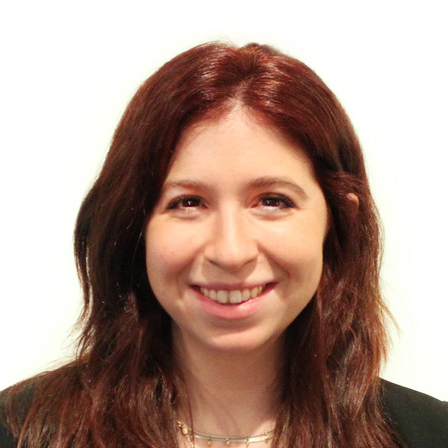

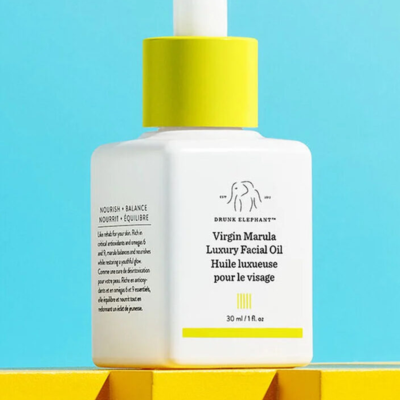

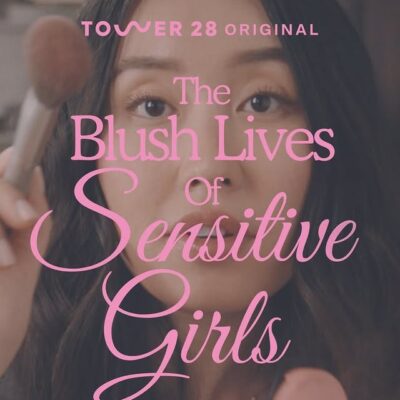
Leave a Reply
You must be logged in to post a comment.